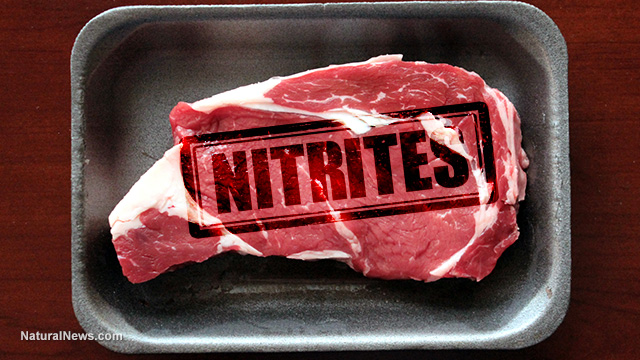Eat bad meat and GET EATEN – by parasites
12/24/2018 / By S.D. Wells

People think that parasites are only a concern if you eat raw meat, but that’s only the tip of the “big worm.” Parasites are organisms that live on or inside other organisms and multiply, while depending on the host for survival, and that’s why parasites rarely kill the host. Yet, you’re not “off the hook” so easily, because parasites often spread diseases that are fatal, such as malaria and trichomoniasis (an STD). Parasites can be microscopic (as with the malarial parasite) or up to a shocking 30 meters long (as with the worm parasite) – that’s one third of a football field.
There are three main types of parasites: protozoa (single-celled organisms), ectoparasites (lice and fleas), and helminths (the worms). Most parasites humans contract come from eating pork, beef, game meat, animal organs, freshwater fish, milk, contaminated soil, pet feces, and sometimes fresh produce (and fruit juices). Pork tapeworms literally hatch in your stomach and can grow to be 10 meters long, feeding off the nutrients you eat.
Medical doctors often mistake parasite infections and their symptoms for other health conditions, including hormone deficiency, food poisoning, and pneumonia. Symptoms of parasite infections include severe malnutrition, abdominal pain, diarrhea, fever, vomiting, epileptic seizures (due to CNS disruptions), skin bumps, rashes, weight loss, sleep problems, and general weakness; however, symptoms usually do not appear until long after infection has taken root, and the parasites can be transmitted to another person before symptoms ever appear.
Trichinella Spiralis, the “pork roundworm,” causes muscle infections
Trichinellosis is a muscle infection you catch from consuming undercooked or raw pork, including smoked sausages. The infected meat is contaminated with parasite cysts that contain larvae which are invisible to the naked eye. The CDC has identified the pork roundworm as a problem that’s spiraling out of control. When the infected meat gets eaten by humans, the larvae then grow into adult worms that mate and reproduce thousands of new larvae, that travel into muscle tissues.
There are many misconceptions about preparing pork and ham to ensure it’s free of roundworm parasites. Freezing the pork doesn’t always kill the roundworms, because some wild game species are freeze-resistant. The so-called “safe temperature” for cooking pork is commonly way off the mark. The FDA says to cook it as low as 120F for more than 20 hours and you’ll eliminate the roundworms, yet the USDA says cook it at 160F minimum, but that usually overcooks the meat, so where’s the “sweet spot” where the meat is still tender and moist but you don’t get infected?
Best ways to avoid meat that’s contaminated with parasites
The majority of meat raised and processed in America comes from horrific CAFOs (confined animal feeding operations) that, if you took a quick tour through one, you would probably become a vegan overnight. International agencies, scientific commissions, chefs, concerned citizens, and activist organizations alike are all in agreement that animal factory conditions must change. Livestock CAFOs are disgusting hellholes where animals are treated brutally, literally live on top of their own feces, and are fed genetically modified corn and soy they would never eat if given the choice to roam normal pastures.
These CAFO animals live with chronic infections, including being contaminated with pathogens and parasites that thrive in the horrific, unkempt factory conditions. Factory workers and butchers are trained to use bleach and ammonia to try to disinfect the contaminated meats, and that’s why most conventional meat sold to Americans is loaded with preservatives, concentrated salts, monosodium glutamate, nitrates, “smoked” flavoring, and artificial food coloring – all meant to trick the consumer into thinking the meat is unadulterated and untainted.
If you buy and consume meat, look for the USDA certified organic label, and be sure to cook it all well. Better yet, consider the fact that animals experience emotions and exhibit distinct personalities, and maybe you won’t want to support the nightmarish CAFO industries anymore.
Sources for this article include:
Tagged Under: ammonia meat, Animal abuse, animal factories, bleach meat, CAFO, confined animals, disease causes, feeding operations, food safety, infected pork, meat parasites, parasites, pathogens, Pork, smoked pork, toxic meat



















